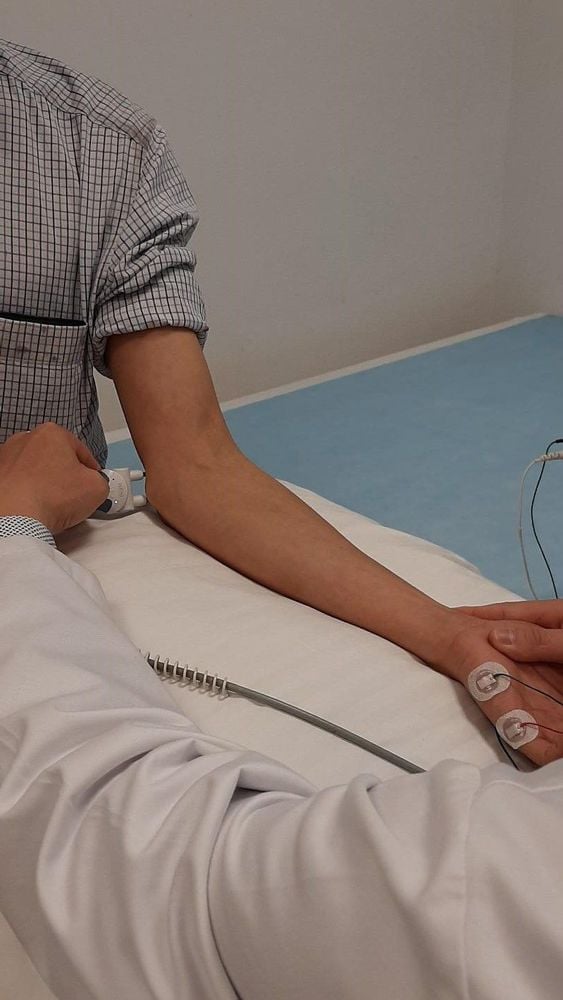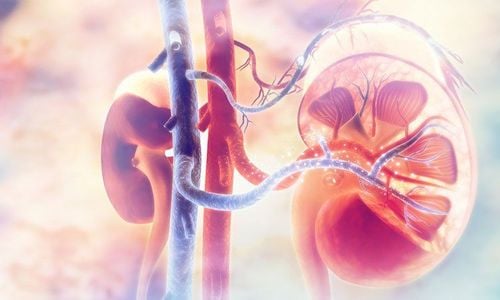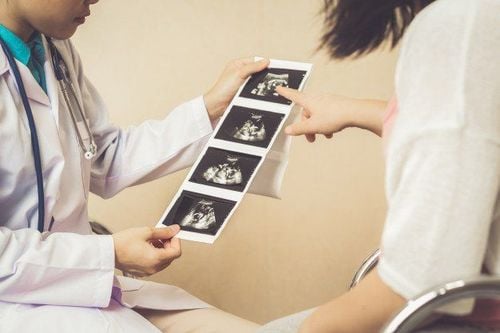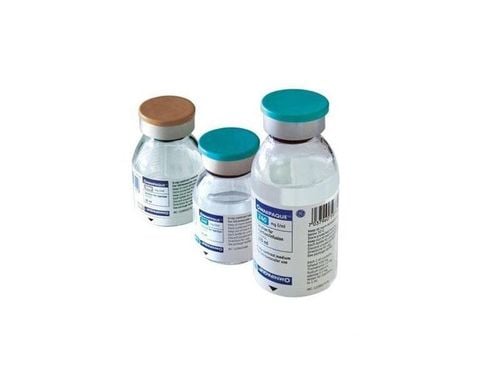This is an automatically translated article.
Posted by Master, Doctor Vu Duy Dung - Doctor of Neurology - Department of General Internal Medicine - Vinmec Times City International Hospitalulnar nerve disease, which usually occurs at or near the elbow, is the second most common mononeuropathy in outpatient neurology settings.
1. Clinical manifestations and physical examination
The ulnar nerve is a mixed sensory and motor nerve. Sensory, the ulnar nerve innervates the fourth and fifth fingers, the medial palmar, and the medial back of the hand. Patients with ulnar nerve disease may present with paresthesias such as numbness or tingling sensations of an electric shock pattern that are most pronounced in the fourth and fifth fingers. It is not uncommon for patients to have pain that radiates to the middle of the elbow and the table. hand, although physical examination will not reveal a lack of objective sensation in the medial forearm. Patients may have pain and tenderness to touch near the condylar fissure in cases of ulnar ulnar neuropathy, although this is not always present.
ulnar motor dysfunction may be noted as clumsiness in mild or early ulnar neuropathy of the elbow. The patient may find it difficult to make subtle movements or to drop objects easily. Often the patient is weak in the V toe and may have difficulty putting it in a trouser pocket. A weak fist is also a common symptom as the motor damage is more advanced. Observant patients may notice atrophy of the intrinsic muscles of the hand, especially the I interosseous space on the dorsal surface of the hand.
Physical examination may show Froment's sign. To examine this sign, the patient is asked to hold a thin object (eg, a piece of paper) between the thumb and forefinger, and the examiner attempts to remove the paper. In patients with weakness of the adductor muscle that is innervated by the ulnar nerve, the paper can be easily removed or the patient will attempt to compensate by using the long flexor of the thumb innervated by the median nerve and clamping it. by the distal knuckle of the thumb. Deep motor examination of the fourth and fifth fingers innervated by the ulnar nerve along with the ulnar carpal flexor should be performed as part of the standard examination.
There may be Tinel's sign of the ulnar nerve at sites of compression. Gentle touching of the condylar groove during flexion and extension of the elbow can be helpful in diagnosing mild displacement of the ulnar nerve, which may also be present in an asymptomatic proportion of people. Although the presence of this finding is not diagnostic of ulnar neuritis and it is not a well-defined risk factor, the identification of mild displacement may be useful in selecting intervention. Surgical intervention is appropriate in patients with ulnar neuropathy of the elbow. Mild displacement can be detected by palpation showing the ulnar nerve moving across the condyle during flexion and extension of the elbow.

Although rarely used by neurologists, the surgical literature frequently uses the McGowan scale in the assessment of ulnar ulnar neuropathy. It is helpful to know about this scale when reading the literature on the subject of surgery and communicating with surgical colleagues. Grade 1 is paresthesia in the IV and V fingers and a clumsy feeling in the hand. Grade 2 is weakness and decreased sensation, sometimes with mild atrophy of the intrinsic muscles of the hand. With grade 3 McGowan, sensory and motor deficits are severe and muscle atrophy is evident.
Clinical symptoms according to the location of the ulnar nerve damage
A. Elbow ulnar neuropathy
Sensation: Numbness or paresthesias in the sensory area of the ulnar nerve are the most common initial symptoms. Usually there are sensory symptoms on the palmar surface of the IV and V fingers and the ulnar edge of the hand Sensory symptoms at the dorsal or palmar fascia of the ulnar nerve are helpful in localizing the lesion. near the top of the forearm (ie, near the wrist). Some patients with severe and persistent numbness may present with a sensation of bisecting the ring finger. Facial pain in the elbow is common, and may be along the medial side of the forearm Sensory symptoms of ulnar neuropathy are often due to prolonged elbow flexion (eg, talking on the phone, lying on the side with the elbow). flexing, leaning on elbows) or performing activities that require repetitive and prolonged hand holding or pronation. 2. Motor
Less common than sensory symptoms May range from mild weakness of the intrinsic muscles of the hand to severe muscle atrophy and claudication of the hand (Figure 1). Some have slight weakness and clumsiness in their hands when doing delicate movements such as buttoning a shirt or typing. In more severe cases, the fist is weak and it is difficult to lift or hold objects B. ulnar neuropathy at the wrist
The degree of ulnar claudication in the IV and V fingers may be greater than that of the ulnar ulnar nerve at the elbow because of the preservation of the flexor muscle. deepening of the toes and weakness of the worms III and IV.
Can be divided into 4 locations of injury:
Damage to the common trunk of the ulnar nerve near or in the Guyon canal causes sensory symptoms according to the distribution of the superficial palmar branch (facial skin of the little finger and hemiplegia). in the ring finger) and moves all the intrinsic muscles of the hand innervated by the ulnar nerve (miniature, interosseous, III and IV worms, adduction of the thumb) Deep motor branch damage causes damage to the muscle (no sensory symptoms) Injury to the deep motor branch after detachment of the carotid branch causes motor damage other than the macular muscle (no sensory symptoms) Injury to the superficial palmar branch of the finger causes Corresponding sensory symptoms but no motor impairment

2. Electrodiagnostic probe
Electrodiagnostic exploration is considered the gold standard in the diagnosis of ulnar neuropathy (Figure 2), but which specific probe is recommended and the definition of abnormality is controversial. Much of the published literature focuses on ulnar ulnar neuropathy, the most common form of ulnar neuropathy.
American Society of Electrodiagnostic and Neuromuscular Medicine (AANEM) guidelines are frequently cited in the majority of research on ulnar ulnar neuropathy. The AANEM guidelines for the diagnosis of ulnar ulnar neuropathy recommend performing ulnar sensory and motor conduction exploration in the abductor little finger. Elbow position during exploration (between 70° and 90° is recommended) should be recorded and appropriate warmth maintained. A minimum distance of 10 cm is required between the above and below elbow stimulation sites.
A diagnosis of ulnar neuropathy is possible when the conduction velocity through the elbow is 10 m/s or more slower than the wrist to sub-elbow. Other findings supporting the diagnosis include a decrease in the CMAP amplitude of more than 20% at elbow traversal. The objections to the original AANEM guidelines focused on decreased sensitivity for precise lesion localization in some patients with ulnar ulnar neuropathy. Sensitivity varies from 37% to 86%, while specificity is above 95%. Techniques that improve sensitivity decrease specificity, and this should be considered when performing additional investigations.
The segmentation technique is common and is often used to locate pathology in ulnar ulnar nerve disease. The 10cm segment between the above and below elbow positions is divided into 2cm segments. Excited at each point, with attention to the difference in latency and CMAP waveforms. Using this approach, the sensitivity of nerve conduction probes is improved, detecting up to 90% of patients with clinical evidence of ulnar ulnar neuropathy. Although this technique gives better sensitivity and more precise localization, it requires more meticulous engineering to give accurate results.
EMG (electromyography) is very important in the evaluation of ulnar ulnar neuropathy. Examination of the muscles innervated by the ulnar nerve is useful for both localization and assessment of severity. Other muscles innervated by the C7 and C8 roots should also be tested to assess for the presence of associated cervical radiculopathy or brachial plexus disease. EMG practitioners should be aware that there is little evidence for the usefulness of needle EMG in determining prognosis.

3. Diagnostic Imaging
On MRI, features of ulnar nerve compression include increased nerve size and hyperintensity on T2 or STIR pulses. MRI is particularly useful in cases where electrodiagnostic exploration cannot localize the lesion.
As with carpal tunnel syndrome, neuromuscular ultrasonography has emerged as the modality of choice in the evaluation of ulnar ulnar neuropathy. The normal cross-section of the ulnar nerve is 8mm2 to 11mm2 at the elbow, a larger size suggesting local compression. Neuromuscular ultrasonography is not believed to be a superior method in diagnosing ulnar ulnar neuropathy for all patients, although there is some evidence that it may be more sensitive than conduction testing. neurotransmission in the early stages of the disease. Neuromuscular ultrasound is best used as an adjunct to clinical and electrodiagnostic data to help localize the lesion. It is useful in identifying the area of pathology and may identify other causes of ulnar ulnar neuropathy. These include anatomical variations (eg, having an anomalous muscle), ganglion cysts, and other crowding lesions.
Evaluation of ulnar radiculopathy is based on many of the principles mentioned above. Evaluation of proximal or distal lesions, exploration of sensory and motor nerve conduction in the ulnar nerve is important. Ultrasound and needle insertion EMG also provide additional useful information. Probing posterior ulnar sensory nerve response may be additionally performed when evaluating distal lesions, assisting in localization of ulnar nerve damage at or near the wrist. The dorsal ulnar sensory nerve response will be normal with wrist involvement, but abnormal with proximal forearm or elbow involvement.
4. Treatment of ulnar nerve disease
The best approach to the treatment of ulnar ulnar neuropathy remains controversial. Three months of conservative treatment with the use of elbow pads and long-term avoidance of elbow flexion are recommended as first-line treatment in those with mild clinical symptoms and non-major lesions on electrodiagnostic. Up to 50% of patients will improve their symptoms with this approach. For patients in whom conservative therapy has failed or who have evidence of significant axonal loss on electrodiagnostic investigations at first visit, surgical treatment is indicated. Three general approaches are used: simple decompression by dissection of the flexural ligament, medial condylarectomy, and ulnar nerve transposition. An early analysis of published data demonstrated that critically ill patients (Grade 3 McGowan) have the best outcomes with anterior ulnar transposition. Other studies have advocated decompression alone over transposition, unless there is difficulty with painful displacement of the ulnar nerve beyond the medial condyle.
There is no consensus on when ulnar ulnar neuropathy becomes severe enough for surgery. Some have suggested that surgical treatment is warranted in patients with mild ulnar radiculopathy (McGowan grade I). Excellent results have been reported in this group using decompression alone and medial condyle resection. Further supporting early intervention are data demonstrating that patients with McGowan grade 3 ulnar radiculopathy are more likely to have relatively good or poor outcomes after surgery.
There have also been several alternative approaches to choose from for the treatment of ulnar ulnar neuropathy. Unlike carpal tunnel syndrome, corticosteroid injections have not been shown to be effective in ulnar ulnar neuropathy. Low-level laser and ultrasound therapy has shown promise but is not widely accepted or available. More research is needed to further understand how ultrasound, electrodiagnostic, and clinical data can combine to predict and optimize treatment outcomes in ulnar ulnar neuropathy.
There is little evidence for the effectiveness of conservative treatment for ulnar nerve disease of the wrist. Possible methods include using padded gloves to protect the hands from occupational or recreational activities (eg, cycling), and frequently changing hand positions while cycling. The surgical method is decompression of the Guyon canal (cylindrical) by experienced hand surgeons.
Currently, Vinmec International General Hospital has implemented surgery for nerve compression diseases. In particular, with the pioneering of electrical diagnostic techniques. Vinmec is one of the few addresses that deploys specialized techniques, with modern equipment of NATUS (USA), the specialist doctor after performing the examination, recording and reading the results will provide a method to diagnose the disease. accurately, giving patients a chance to recover, safe treatment and no complications.
Please dial HOTLINE for more information or register for an appointment HERE. Download MyVinmec app to make appointments faster and to manage your bookings easily.
References:
Hobson-Webb LD, Juel VC. Common Entrapment Neuropathies. Continuum (Minneap Minn) 2017;23(2, Selected Topics in Outpatient Neurology):487-511. Doherty T.J. Ulnar neuropathy at the elbow and wrist. [online] Available at: https://www.uptodate.com/contents/ulnar-neuropathy-at-the-elbow-and-wrist
H87963063 [Accessed 25 September 2020].














